Perennial Flox (Phlox) - bright beautifully mixing herbaceous plants from the family of synun, originally from the northern part of America. In total, there are up to 40 species of perennial phloxes. The plant won the vast popularity of the flower water, which use it to decorate the flower bed and creating colorful group compositions. You can meet Floxes in almost any garden. Floxes are unpretentious and well transfer frosty winters and suit for any country area and garden, they have a wonderful aroma, and their lush colorful blossom continues the entire summer season.
Floxes Perennial, Description
Floxes Perennial are attractive thanks to their fragrant and bright flowers, which are connected in inflorescences. Their color scheme is very diverse: white, pink, red, blue, lilac and raspberry shades. Flowers Flox Perennial, consisting of five petals, have a tubular-funk-like shape in a diameter of 2-4 cm, there are up to 100 pieces in inflorescences. The diameter of the inflorescence is approximately 10-15 cm, there are inflorescences on reprehension, creeping or ascending stems, depending on the species, the height of the stem can be from 10 cm to 1.5 meters. Flox leaves have an elongated, ovoid shape.
Floxes Perennial, varieties and types
All varieties of perennial floccers are divided into 2 categories: soil and bush.
Sharply perennial phloxes
They are also called soil or fluttering floccams. The height of the lowered phlox reaches from 5 to 40 cm. The plant remarks greatly into the width and is suitable for creating an alpine slide. Its shades can be the most different: from white, gentle pink, blue to a saturated lilac.
There is a wide variety of soil varieties of perennial phloxes:
Subulate. The most common among the sharpening phloxes. This is a carpet low plant (up to 18 cm high) with narrow leaves, which at the end have a hard accuracy similar to Shilo. The lidoid phlox fully covers the land plot on which it grows, decorating it not only with colorful inflorescences of pink, white and purple color, but also juicy evergreen leaves. The period of color of the Majan variety, re-blooms in August, glad to the eye until September. Among the bread-shaped phloxes most popular varieties:
- Candy Straps. Flowers of this variety are white, and in the center - pink strip.
- Tellyard. A long-scale variety with flowers in the shape of a star of lilac shades.
- Maisher. Flox with snow-white inflorescences.
- Thumbelina. Fast-growing phlox with pink flower color.
Douglas. A small plant up to 10 cm in height, whose feature is a dense pad consisting of rigid stems. Flowers can be lilac, white, purple, the time of its flowering from May to June. 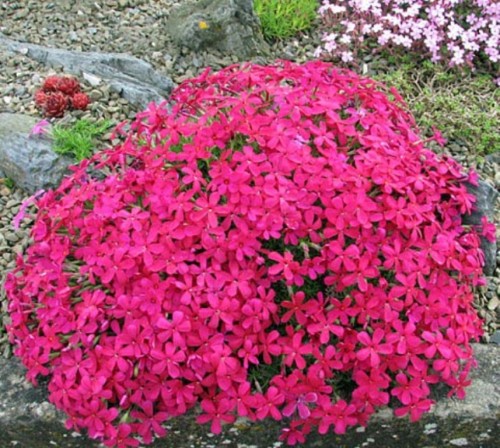
Bunned. The grade with rigid, slightly floated stems, the colors of flowers is diverse, most often found white and blue flowers. The feature of the variety is the structure of the flower, its petals have a dissected form, externally creating the impression that their number is 10 pieces.
Whitelines flushed
Which in turn is divided into low-spirited and tall varieties. The bush phloxes are most common and grown by flowers, grow perfectly on wet soils and shaded garden sections. The height of the bush may be different: in short varieties - to a meter, in tall - more than a meter. The most beloved flowerflox flushed, the time of his bloom. The end of summer is an early autumn. Inflorescences are large, fragrant of a wide variety of colors from delicate white, pink to saturated juicy lilac, purple flowers.
Among the tall splashing phloxes can be allocated:
Windsor, Plant height is up to 1.5 meters. The leaves have an elongated, oval shape, the color of the petals can be from white to carmine. Prefers sunny sections.
Natasha. Personal bush up to 1.5 meters in height, white flowers, blue colors, prefers shadow. 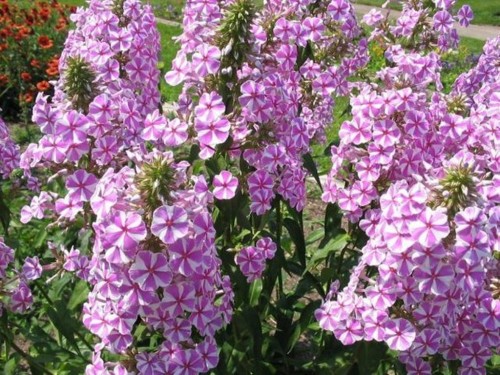
Nicky.Long-term Flox grade with dark saturated inflorescences, the height of the bush is up to 1.2 meters, the time of flowering is the beginning of the summer, September.
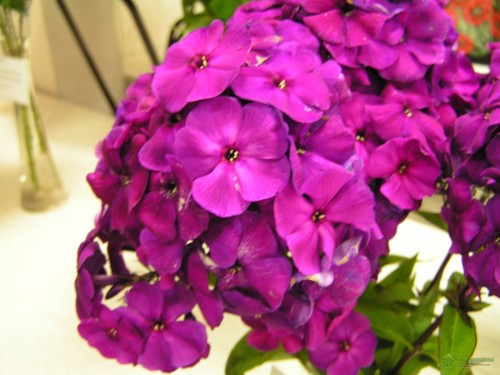
Tenor. Lush bush with abundant blossom, petals color - bright, purple red.
Magic Blue. High bush with lush flowering since the beginning of summer in September. Flowers can be white, lilac, blue and scarlet.
Shallow:
Shcherbet cocktail. A fast-growing variety with the original coloring of petals, their edges have an olive shade. 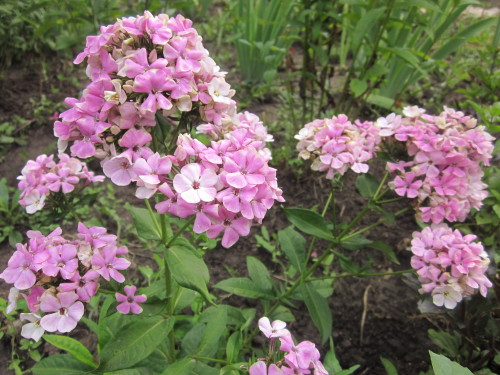
Tiara. Beautiful and unpretentious grade with snow-white inflorescences against the background of the greenery of emerald color. 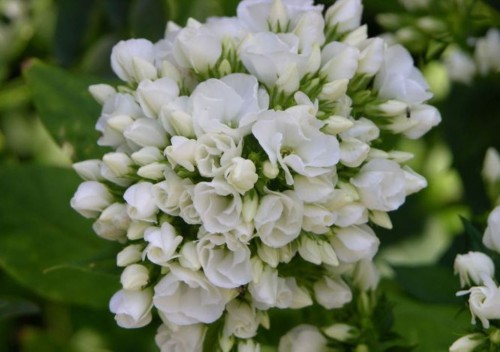
Orange Perfexes. A variety feature is a rare color of salmon petals, which in bright sun look pink. Blooms later all varieties.

Choosing a landing grade, first of all, you need to decide on the place where phlox will grow and their destination on the site. For example, for the arrangement of the Alpine slides, the creation of the retaining wall or the discounts will be suitable grades. And for the flower bed, where phloxes will be decorated with the back plan - bush tall varieties.
Floxes Perennial, reproduction
Modifying perennial phloxes can be treated as a vegetative method-stalling, dividing bush, and seeds.
How to propagate phlox perennial seeds
Perennial flocks that are grown from seeds are most adapted to the climatic characteristics of the region. Seeds can be purchased in the store or assemble yourself. Seeds are collected in the autumn period when the plant will start all the foliage. Flox seeds are located in a seed brown box. Ripe seeds should be dense structures of dark green shades. Seed material is ready for landing immediately after collecting. 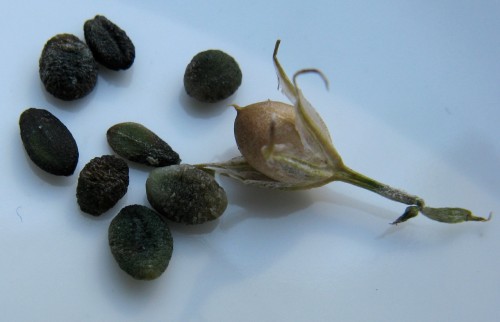
The peculiarity of perennial floccals is that their seeds are quickly losing germination, so the landing should be carried out in the fall. For planting, choose a sunny plot protected from drafts and winds, given that phloxes are exposed for several years. It is not recommended to plant a plant in the shade, under the crowns of trees, in shorts - there are uncomfortable phloxes there. Soil choose a nutritious or loose, phlox is poorly growing in sand and acidic soil, sometimes shoots do not even appear on such sections.
The optimal period for planting phloxes is November, the deadline is in January. You should not be afraid of the first dropped snow, you only need to clear the beds or a flower leaf, which you need to prepare in advance before frosts. Spread the seeds on the surface of the soil at a distance of 5 cm, and close the garden earth from above, which can be prepared in advance or buy in the store. The layer of the Earth should be about 1 cm. From above, you can pour the planting snow. Such a simple way to plant seeds of perennial phloxes into open ground provides high germination, up to 70% and early bloom.
Reproduction of perennial phloxes with cuttings in spring
The method of reproduction of stalling allows to multiply the most rare and beautiful varieties of phlox, while retaining their appearance.
Upon reaching a height of 15 cm, it is possible to carry out its shilling. The shoots cut into this period are better shot, as they still did not have time to be worn. For the selection of shoots, a healthy maternal bush is selected. On the selected stalk there should be 2 interstices, the slice is taken at the bottom under one node and at the top - above 5-7 cm. The lower pair of leaves and the upper part of the escape is cut. Then the cuttings must be treated with rhoin, to stimulate the development of the root plant of the plant. 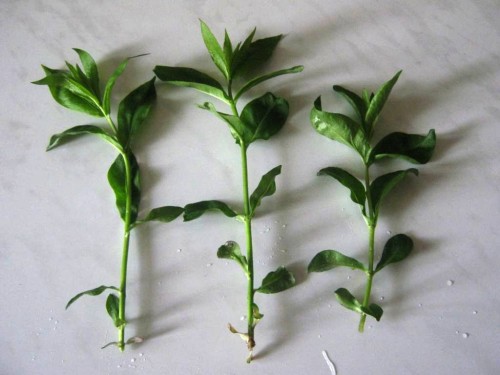
Prepared cuttings can be planted in a rampantboard, where it is necessary to prepare the soil in advance. The composition of the soil should include: sand, humid and ferry soil (1: 1: 1), with a layer of soil in the garden should be about 10 cm, for its seal it is recommended to pour a good garden, and on top of sprinkle with river sand 2-3 cm .
Green cuttings need to be stuck in the sand layer, while monitoring the edges of the lower cut from the fertilized soil. When landing, abide by the distance between the shoots - 5-6 cm, between the bed - up to 12 cm.
Then the cuttings must be pouring from the top from the sprayer and create a greenhouse effect to them, covering the film. Spraying with warm water must be carried out regularly. Approximately after 3 weeks, the cuttings are rooted and during this period need to be superior with a solution of potassium (sulfur potassium and ammonium nitrate for 10-15 grams, 10 liters of water are divorced). When the first shoots appear, the film can be removed.
Reproduction of perennial phloxes autumn cuttings
For reproduction, cuttings are harvested at the beginning of autumn, the young shoots of the current year are chosen for cutting. The process of cutting and cutting processing is similar to spring stalling described above. Not open soil, but greenhouses or heated greenhouses are used to rooug the cuttings.
Reproduction of the division of the bush
The division of the bush is the easiest and not time-consuming way to multiply perennial phloxes. This method allows you to rejuvenate the old maternal bush, and keep the grade of the plant. For the first time, the method of dividing the bush can be plated by a plant that has reached 3-4 years of age. The time of the procedure is any: Spring, Summer or Autumn.
The maternal bush must be inked around the circumference, extract the root, and the shoots of trim, leaving a length of 10-25 cm. Floxes have a fairly developed long rhizome, reaching lengths up to 15 cm. With a sharp knife, the shovels must be cut into several separate parts so that On each bush were kidneys for renewal (up to 5 pieces.) Dellens better replant with an earthen room, located on rhizome, so that the plant is better rooted. Flowering of young bushes Flox can be admired next year.
Floxes Perennial, landing
If you want to grow in its plot, flowerbed or in the garden, the luxurious bushes of phloxes with abundant bloom, it is necessary to take into account some important factors affecting their height:
- good fertilizer, nutrient soil for planting;
- the quality of the planting material;
- the correct location of seedlings on the flowerbed;
- time and landing site of seedlings.
Floxation landing is carried out in the prepared ground. Many believe that phlox is unpretentious and will grow on any basis. But, despite the fact that the plant is hardy and frost-resistant, for a lush abundant blooming for one year, the soil must be prepared a year before landing. For phloxes, a loose, moistened and pre-fertilized soil, whose acidity pH is 5.5-7.0. Feel the soil to organic: manure, compost, ash, humus. If clay or thin soils prevail in your region, it is recommended to mix it with sand, peat and manure, and if sandy is used by clay, ferry soil, compost and manure.
Before planting phlox, it is also necessary to pay attention to the landing material. Buy phlox perennial in special stores or nurseries in the autumn period. Saplings should have 2-3 thickened stems with large kidneys at the base with a well-developed healthy root system, the root length must be up to 15 cm.
Saw seedling, sprout root well, you can trigger root root so that the plant must be better stuck, shuffle into the ground seedlove with the kidney not lower than 4-5 cm. The time of year for planting can be chosen any: spring, summer or autumn.
Spring landing
You can plant the seedlings of many years of Flox in the spring from mid-April, during the spring period the bush is well rooted. After planting phlox need abundant irrigation within two weeks
Landing in autumn
For autumn landing, choose September or October, before the first frosting roots rooted and reappear with nutrients. In the spring, the plant will begin its development, and in the summer they will bloom.
Landing in summer
The main advantage of the summer landing - phlox is planted with blooming and it will be possible not to doubt the grade of the plant. After planting a bush, inflorescences cut off. The landed bush must be pronounced and wip well every day. It is useful to spend the leaf spraying in the morning and evening hours.
Distance that must be taken between landing seedlings
For landing of low-speed soil phloals, a distance of 35-40 cm should be observed between the bushes, for medium varieties of phlox - 50 cm, and for tall hoods - at least 60-70 cm.
When to transplant perennial phlox
Floxes, like all perennials need a transplant, as a plant growing in one place gradually degenerates: Flowers become small, no abundant flowering. This is due to the exhaustion of the soil, in accumulating the pathogens of specific diseases. It is recommended to transplant the bushes of many years of phlox no later than six years after its landing. Flox is suitable for the Flox transplant, when the plant growth ends.
Floxes Perennial, Care
Perennial phloxes need timely tug, removing weeds, soil looser, watering and mandatory feeding.
Undercaming Floxes
Falkers for growth and abundant flowering plants are made in different periods:
- During active growth, Floxam requires feeding nitrogen.
- During bootonization and flowering, Floxam requires feeding in the form of potash and phosphoric fertilizers.
- In the fall, when the nutrient accumulation of the root system occurs, the phloxes need to be filled with phosphoric fertilizers.
Also, perennial phlox throughout the period is recommended to spray with solutions of such drugs as uniformico or cittovitis.
Watering
Perennial phloxes are moisture-loving plants and need regular, frequent watering, especially in a sultry summer.
Perennial Floxes - wintering
Floxes are perfectly tolerated frost and in the southern regions, where frosts are not less than 15 degrees, they do not need shelter. In the central regions of the country, Flox needs to be prepared for wintering. The soil must be mulched, cover the bushes with straw, covering material or build boxes. In the northern regions with frosty winters, Floxam fails to be overwhelmed in the open soil with shelter, it is better to wear a bush and store it in the basement, in the spring to fall on the previous place.
Diseases and pests of perennial phloxes
Floxes are subject to such diseases as:
- Puffy dew - a fungal disease, in which on the leaves of the plant you can notice a white flare, with time the larch acquires a grayish tint. The affected leaves should be removed and treated with a bordrian liquid, a solution of colloidal sulfur or such drugs as "oxych" "HOM". For prevention, it is recommended to handle young shoots in early spring copper vitrios, and in summer - a solution of Fundazola.
- Spotted leaves - a disease in which on the leaves of the plant can see brown spots, increasing over time, later the leaves are yellow and dry. A burglar liquid (1% solution) helps in the fight against spotting, which need to handle bush every 2 weeks.
- Sepitoriosis is a fungal disease, affecting the lower leaves, on which gray spots with a buroy border appear. In the fight against the disease, the preparation "Profit" has proven well.
- Fomoz - a disease in which during the bootonization and flowering of the plant can be seen twisted yellow leaves, and the stem acquires a brown shade and cracks. To combat the disease, a burglar liquid is effective to handle the plant every 10 days, the procedure is repeated 4 times.
Very often it can be noted that the lower leaves dry out the lower leaves - this is not a disease, but the case is in the wrong leaving of the plant. Floxam lacks moisture, or a consequence of improper feeding with mortar with mineral fertilizers. Conduct feeders follows over cloudy weather or in the evening. If fertilizer falls into the leaves in the sunny hot weather, it can lead to their burn - foliage yellowing and twisted.
Floxes are subject to pest attack:
- Nematodes - with their attack on the stems and leaves of the plant, there are convexities, which lead to the deformation of shoots, inflorescences, and over time the plant dies. Sick specimens of plants need to dig and burn, as it is very difficult to get rid of the pest.
- Slugs are dangerous in that they feed on young shoots and leaves. To prevent their appearance, regularly loose the soil, remove weeds, the soil under the bus must be sprinkled with wood ash.
- Slying Pennie is found on plants with dry weather. With its attack, the leaves look crossed, and on the underside you can see the characteristic foam discharges, in which there are larvae that feed on the leaf juice. Remove the pest will help the drug "Inta-Vir".
- Butterfly caterpillars and scoop are powered by leaves, buds and flowers. It is necessary to treat bushes with a drug from rodent pests.
Perennial Floxes in Landscape Design
Perennial phlox, thanks to a huge variety of varieties, colors of inflorescences, their unpretentiousness, are successfully used to decorate flower, borders for the preparation of group flower compositions and alpine slides.
For registration of garden tracks, curbs are perfectly suitable for medium varieties of phloxes. Bright phloxes look beautifully in the neighborhood with robbery, roses, loyabers. The compositions of low-speed phlox are used to zoning the garden. 
Perennial Floxes is an unpretentious beautiful plant for a garden and a summer cottage that can give him charm, bright colors and create a cozy atmosphere. A competently chosen permanent place for its landing, regular making feeding, sufficient watering will allow to grow luxurious bushes with bright lush inflorescences of various colorful shades, decent admiration.

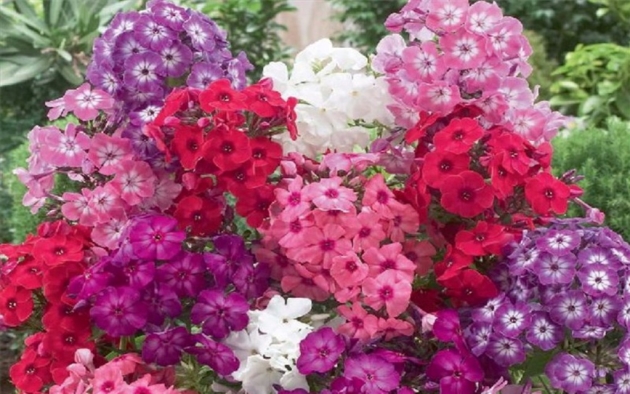
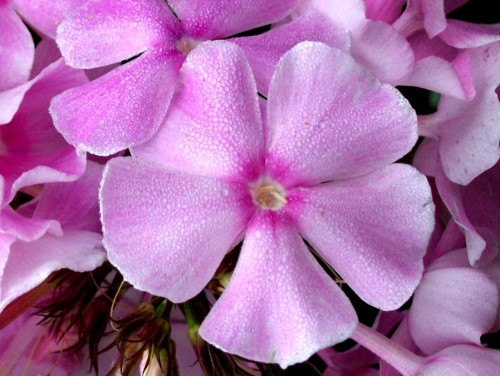
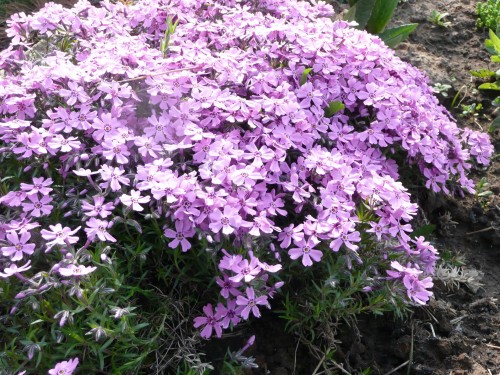

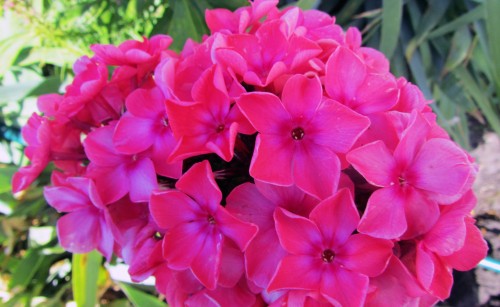
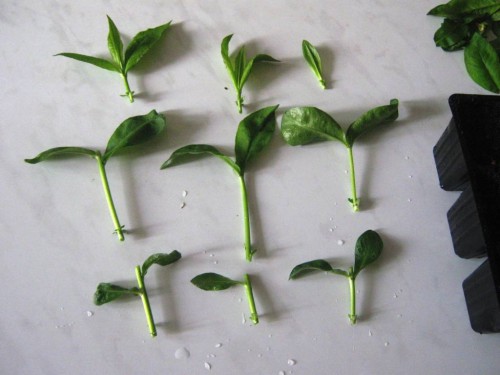
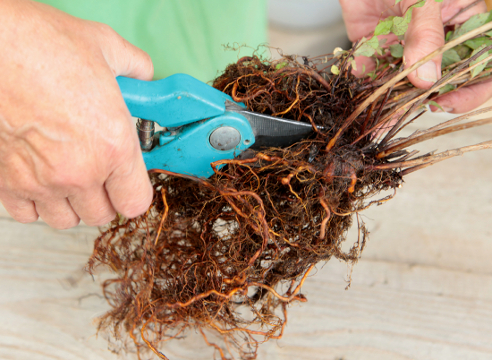
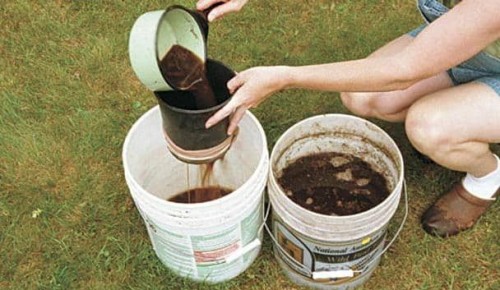
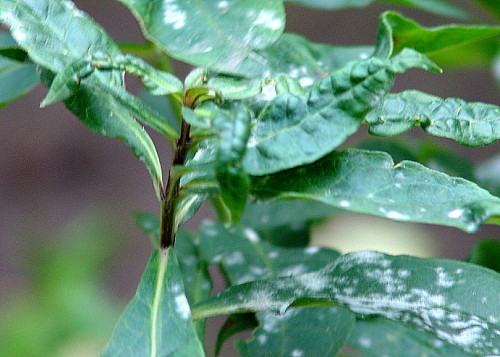
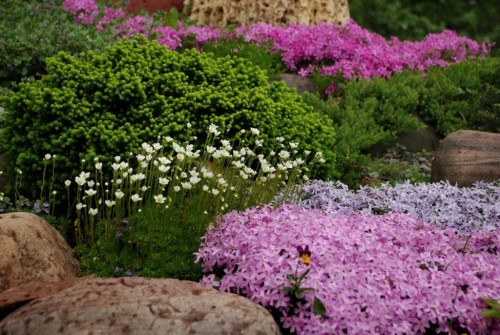

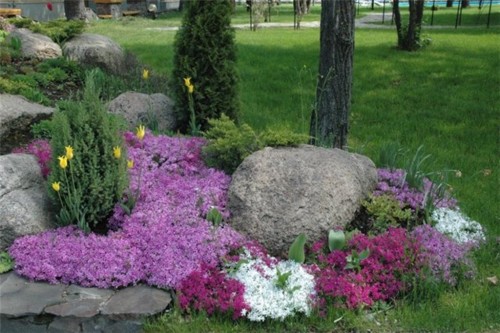
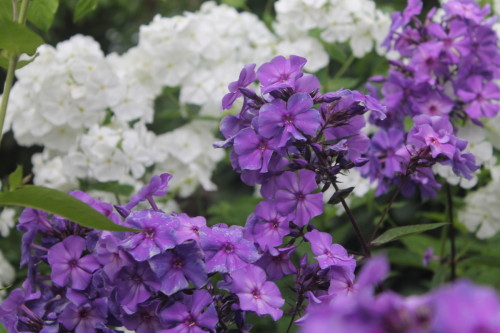
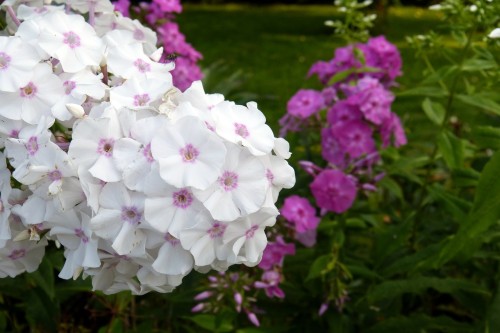
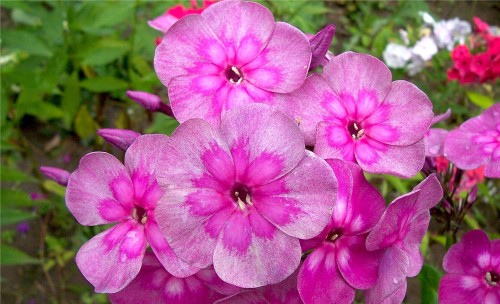
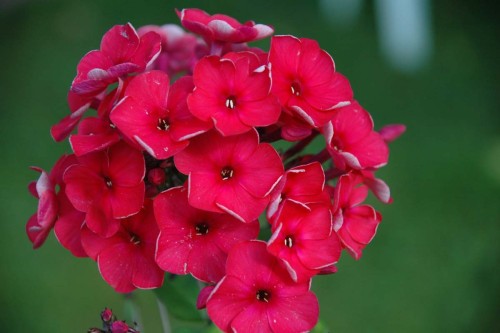
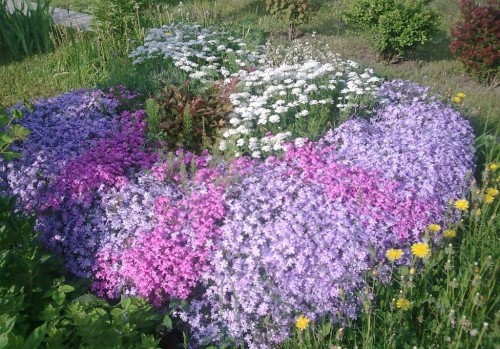
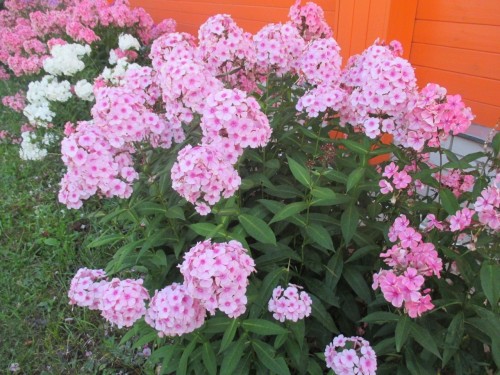












 Start a discussion ...
Start a discussion ...